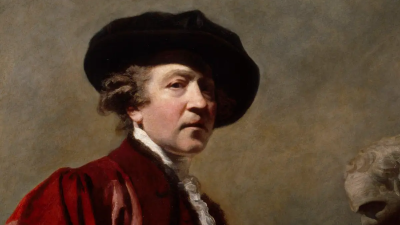
Temple of Divine Vespasian, Cast of cyma recta possibly from an upper cornice, late 18th century/early 19th century.
Plaster cast. 14 cm x 85 cm, Weight: 12.2 kg. © Photo: Royal Academy of Arts, London.
This image is not available to download. To licence this image for commercial purposes, contact our Picture Library at picturelibrary@royalacademy.org.uk
Cast of cyma recta possibly from an upper cornice, late 18th century/early 19th century
From: Temple of Divine Vespasian
RA Collection: Art
On free display in The Dorfman Architecture Court
The cast may be taken from the cyma or decorative moulding of the cornice of the Temple of the Divine Vespasian. Three of the columns of this Temple have always been standing in the Roman Forum. Since the 15th century, it was a much studied ancient ruin and was known as the Temple of Jupiter Tonans (Thundering Jupiter).
Vespasian died in AD 79 and his son, Titus, began the temple for him. Titus himself died in 81, and his younger brother, Domitian, completed the Temple for both his father and brother. It was later restored by the Septimius Severus and Caracalla; the extant part of the inscription on the frieze of the east side records this.
The Royal Academy has six extant casts taken from details of the building but had at least three more in 1879 when Bedford Lemere photographed the collection.
The crowning cyma of the cornice, shown in this cast, is nowhere preserved in situ and is known only from a series of fragments which are now part of reconstruction of the entire entablature in the Capitoline Museum. That reconstruction was the product primarily of the excavations of 1823, and only a small section of the cyma is entirely ancient. Mainly the leaves numbered from 11 to 15 of that reconstruction are original, and they are probably those represented in this cast.
Object details
14 cm x 85 cm, Weight: 12.2 kg
Start exploring the RA Collection
- Explore art works, paint-smeared palettes, scribbled letters and more...
- Artists and architects have run the RA for 250 years.
Our Collection is a record of them.



